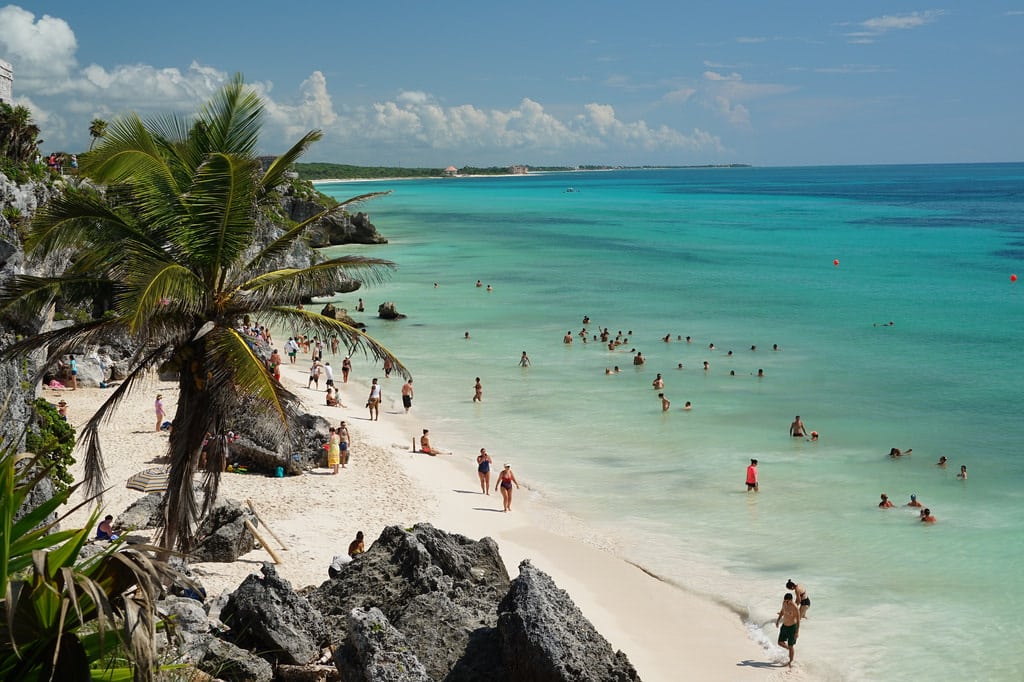Skift Take
Mexico's tourism industry has been lucky in the past year as the violence mostly hasn't targeted tourist destinations like Mexico City. But if history is any guide, tourism is often the focus for anyone wanting to cause harm and chaos. We hope we're wrong about this one.
Headlines about violent crime, drug wars, and a border wall in Mexico have flashed across TV sets and online sites in recent months. While Mexico’s tourism industry claims it’s been business as usual, it’s clear that some marketing resources in popular destinations have been diverted to addressing safety rather than highlighting sexier elements like beaches and cuisine.
Much of the violence hasn’t impacted or targeted tourists, and travel advisories from the U.S. Department of State don’t include tourist areas such as Cancun, Riveria Maya, and Playa del Carmen.
Some 10.6 million international arrivals visited Mexico in the first quarter of 2018, up 12.6 percent compared to the same period last year. Mexico also became the sixth most visited country by international arrivals last year, up from the eighth most visited in 2016.
Mexico City had the largest increase in international arrivals (nearly 15 percent) followed by Guadalajara (11.1 percent), Cancun (6.9 percent), Puerto Vallarta (5.1 percent), and Los Cabos (4.6 percent). Tourism revenue also grew 7.2 percent year-over-year for the first quarter ($6.2 billion).
Data from Quintana Roo Tourism Board show U.S. arrivals were down slightly for January and February, but other markets such as Canada, UK, and Latin America have grown compared to 2017.
Los Cabos, which had a homicide rate of 110 murders per 100,000 people in 2017, implemented an emergency five-point plan in September, 2017, to overhaul its security procedures throughout the destination. Los Cabos’ public and private sector invested $50 million in the plan, which included installing new surveillance cameras and implementing U.S. government safety training protocols.
The destination has seen a 90 percent decrease in incidents In the eight months since the plan was launched and tourism officials are already calling the plan a success, said Rodrigo Esponda, managing director of the Los Cabos Tourism Board. That’s a dramatic reversal in a short amount of time, and although the destination posted an increase in visitor arrivals so far this year the rest of the year remains uncertain.
“We have been sharing the plan and tools with other Mexico destinations,” said Esponda.
Esponda said Los Cabos plans to launch a marketing campaign in the next few months but couldn’t offer specifics, only clarifying that safety and security won’t be the focus of the campaign. “We’re looking to communicate how Los Cabos is different from the rest of the Caribbean, not just Mexico,” said Esponda. “Our marketing plans haven’t been altered because of the emergency five-point plan.”
Enrique de la Madrid, Mexico’s Secretary of Tourism, said during a press conference on Tuesday that it’s a fact that crime rates in some parts of the country have been increasing and the Mexico Tourism Board plans to up the ante on the safety narrative. “We’re working on a campaign for the U.S. to stress that violence hasn’t impacted tourists,” he said.
Cancun and the Quintana Roo are using the Guest Assist mobile app to give tourists updated safety information and alerts, said de la Madrid. The app is available in Spanish and the destination plans to make an English version for Android devices available soon.
The region has also installed some 3,000 surveillance cameras in the Cancún and Playa del Carmen since last year.
What’s also unclear is the degree of coordination among various Mexico destinations to throw water on the negative headlines this year. Despite the saturation of mobile phones with advanced GPS systems, many travelers remain ignorant of the geography in various countries and believe if one area is deemed unsafe the entire country should be avoided. Mexico seems to have some kind of plan to address Mexico’s overall image problem this summer but it still might not get to the root of the problem.
Tourists may not be in imminent danger. But do most people want to vacation somewhere where beaches have a heavy police presence or where travelers are encouraged to download an app that could heighten anxieties?
The Daily Newsletter
Our daily coverage of the global travel industry. Written by editors and analysts from across Skift’s brands.
Have a confidential tip for Skift? Get in touch
Photo credit: Mexico tourism officials plan to launch marketing campaigns to address negative headlines about the country. Pictured are tourists on a beach in Tulum, Mexico. Matt Kieffer / Flickr
